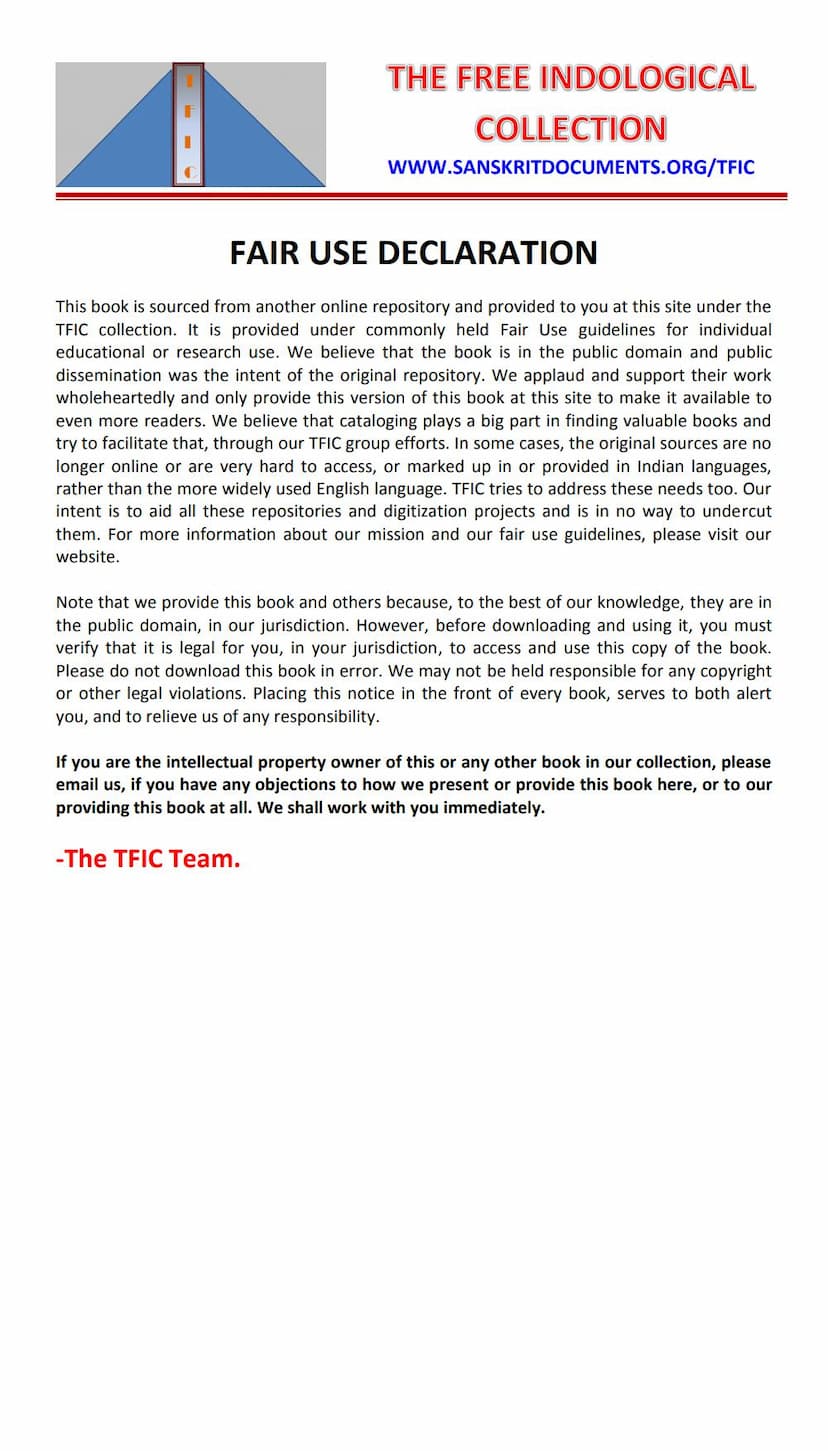Antya Karm Dipak
Added to library: September 1, 2025

Summary
Here's a comprehensive summary of the Jain text "Antya Karm Dipak" by Nityanandparvati, based on the provided text:
The book "Antya Karm Dipak" (अन्त्यकर्मदीपकः), authored by Mahamahopadhyaya Pandit Nityanandparvati, and published by Chaukhamba Sanskrit Pustakalaya, Varanasi, is a detailed guide to the rites and rituals performed for the deceased, focusing on the end-of-life ceremonies and the purification rituals that follow. The text, presented as the sixth flower in the Karma Kanda section of the Kashi Sanskrit Granthamala, also includes a detailed analysis of the period of impurity (Ashaucha) and its various determinants.
The book begins by acknowledging the importance of the "Antya Sanskar" (final rites) as one of the sixteen essential Sanskars (sacraments) in Hindu tradition, as mentioned by authors like Jatukarna and Yajnavalkya, who classify cremation rites as the ultimate Sanskar.
The text meticulously details various procedures and rituals concerning death and its aftermath, covering a wide spectrum of scenarios and religious injunctions.
Key Sections and Topics Covered:
- Rituals for the Dying (Mumurshu Krutya): It outlines actions to be taken when someone is on the verge of death, suggesting practices like taking them to holy places, performing vow completions, expiations, and various forms of charity, often undertaken by the dying person or their descendants on their behalf.
- Charitable Offerings (Dana): A significant portion is dedicated to various types of donations considered meritorious during the end-of-life period and for the deceased in the afterlife. These include:
- The Ten Great Gifts (Dash Dana): Land (Bhumi), Sesame seeds (Til), Gold (Suvarna), Ghee (Aajya), Clothes (Vastra), Grains (Dhanya), Jaggery (Gud), Silver (Rajat), Salt (Lavan), and the sacred cow (Dhenu) in various forms like the "Rinadhenu," "Papapanodanadhenu," "Mokshadhenu," "Vaitarani Dhenu," and "Utkranti Dhenu."
- Other specific donations: Offering of sesame in a pot (Tilapatra dan), etc.
- Post-Demise Rituals (Dehatyaganantar Krutya): This section covers the immediate actions after death, including the preparation of the body, the procession to the cremation ground, the placement of the body, and the initial rituals performed before and during cremation.
- Specific Death Scenarios and Rites: The book addresses various unusual or challenging death situations, providing specific guidelines for:
- Death during the Panchak/Tripushkar period, including specific cremation methods.
- Death of menstruating women, new mothers, pregnant women, and individuals with leprosy.
- Methods for disposing of bodies found in specific states (e.g., "Parnanaradahavithi").
- Rituals for suicide or unnatural deaths ("Atmaghataadi Durmarana Vidhi").
- Rituals for snakebite deaths.
- Expiation for contact with lower castes during cremation or for burnt bodies.
- Post-Cremation Rites: Detailed procedures for collecting ashes (Asthi Sanchayan), immersing them in holy waters (Tirthe Asthi Kshepa Vidhi), and the daily rituals of purification and mourning observed after cremation, specifically the Dashaha Krutya (ten-day rituals), Ekadasha Krutya (eleventh-day rituals), and subsequent ceremonies like Vrishotsarga (release of a bull) and various Shraddhas (ancestral remembrance rituals).
- Shraddha Rituals: Elaborate descriptions of Shraddha ceremonies, including Ekadasha Shraddha (eleventh-day Shraddha), Uni-Masika Shraddha (monthly Shraddha), and Sampindikarana (the ritual of merging the deceased with ancestral spirits).
- Purification and Appeasement Rites: Inclusion of rituals for pacifying specific inauspicious astrological periods like Panchakmarana Shanti and Tripushkar Shanti.
- Ashaucha (Impurity) Period: A significant and detailed section is dedicated to determining the duration and rules of impurity following birth and death. This includes:
- Determining Ashaucha: Rules for impurity based on the relationship to the deceased (Sapinda, Sodaka, Sagotra), and its duration in various circumstances like birth and death.
- Interruption and Overlap of Ashaucha: Guidelines for situations where periods of impurity overlap or are interrupted.
- Specific Cases: Rules for impurity related to parents, spouses, children, siblings, and other relatives, considering factors like marriage status, age, and whether the event occurred in the same place or abroad.
- Impurity related to Actions: Rules for impurity due to contact with impure substances or individuals, and expiations for the same.
- Specific Groups: Guidelines for Brahmacharis, Yatis (ascetics), and those who have performed specific vows or rituals.
- Exceptions and Special Conditions: Rules pertaining to children who have not undergone Upanayana, married daughters, and cases of death in foreign lands.
- Rituals for Ascetics (Yati): A distinct section addresses the rites for ascetics who have renounced worldly life, emphasizing that they do not incur impurity and that their physical remains are treated differently.
- Specific Mantras and Procedures: Throughout the text, specific mantras, vows, and procedures are prescribed for each ritual, often quoting from various scriptures like the Puranas, Smritis, and the teachings of sages.
The book's structure is indicated by its comprehensive index, listing a vast array of topics from rituals for the dying and various forms of charity to detailed procedures for cremation, purification, and ancestral rites, all intertwined with a thorough explanation of the rules governing ritual purity and impurity. The aim is to provide a complete and authoritative guide for performing these crucial rites correctly, ensuring spiritual welfare for both the deceased and the living.